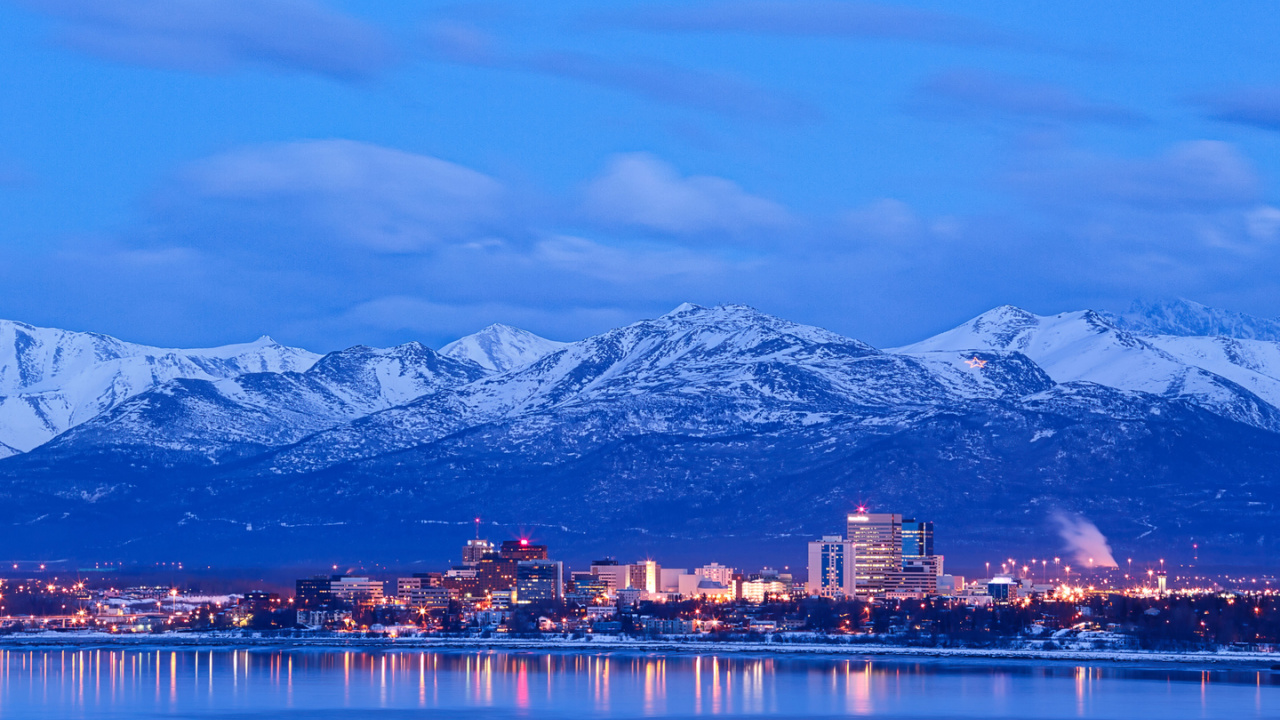Beware: 24 Dangerous Parks – Simple Family Preparedness


As we become more entrenched in a digital world with the passing of each year, many of us yearn for a natural escape. Fortunately, the National Park System offers a sanctuary, protecting and insulating these natural wonders from outside influence.
But like a rose bears its thorns, so too does nature’s mighty wrath. Whether encountering untamed wildlife or tackling treacherous terrains, each unique location across the nation promises thrills with a side of unpredictable danger.
So, gear up for a journey into the wild, but remember: heed our warning and take the proper precautions before visiting any of these deceptively alluring natural wonders.
Over two million adventurers flock to Joshua Tree National Park each year, drawn to its rigid rock formations and signature Joshua trees, craving a unique desert experience. But with the park’s allure comes significant danger to all who enter.
With scorching daytime heat that plummets with the setting sun, visitors gamble with dehydration, heat-related illnesses, and even death. In June 1987, a 36-year-old Long Beach resident discovered first-hand how underestimating Joshua Tree’s brutal conditions can end, perishing in its wilderness and rendering a stark reminder of the park’s unforgiving nature.

Denali National Park and Preserve in Alaska is often touted as the most deadly National Park in the US–and for good reason. The park’s allure is matched by its extreme conditions. With its severe cold temperatures and snow-laden landscape, unpredictable Alaskan weather blends up a recipe prime for avalanche potential.
Climbers face these conditions head-on. Between 1903 and the close of the 2006 climbing season, Denali witnessed 96 fatalities. Fortunately, there’s been a downward trend in the death rate, now at 3.08 per 1,000 attempts to reach the summit. Nevertheless, it’s a stark reminder of the brutal realities behind Mother Nature’s beauty.

The overwhelming presence of a sequoia tree is surreal–and both Sequoia and Kings Canyon National Parks are littered with them. However, the enticingly majestic nature of these parks poses significant threats.
The immense size of the sequoias can be deceiving, leading to perilous falls. The parks’ rugged, remote backcountry increases the risk of getting lost or encountering wildlife. When backpacking, steep terrain adds to the area’s physical hazards.

Zion National Park in Utah is adored for its stunning red sandstone cliffs, narrow canyons, and beautiful hiking trails. However, the park’s dark and tragic history is hidden beneath its beautiful surface.
In 2015, a flash flood in Zion National Park’s Keyhole Canyon tragically claimed the lives of seven hikers. Before this incident, the challenging and narrow path to Angels Landing resulted in a minimum of five deaths. Even the skies above loom with danger in the park’s more elevated and open areas. Dazzling yet potentially fatal lightning storms catch many hikers off guard. It’s a park brimming with menacing energy from the bottom to the top.

Grand Teton National Park in Wyoming is a marvel of the American wilderness, acclaimed for its stunning mountain range and iconic Grand Teton peak. The park’s beauty, however, is matched by its precariousness. Challenging terrain, sudden weather changes, and steep, rocky ascents pose serious risks for climbers and hikers.
Avalanches are common hazards, and falls can end in tragedy for inexperienced climbers or those attempting more physically challenging routes. Coupled with the presence of bears and other wildlife, you need to be vigilant and knowledgeable about handling wildlife encounters properly.

The only thing more impressive than temperatures in Death Valley National Park is the bragging rights from surviving a place with “Death Valley” in its name. In fact, this heat zone holds the record for the hottest place on Earth–reaching 134°F back in 1913.
Death Valley’s extreme environment is as hazardous as it is beautiful. Summer temperatures often soar above 120°F, posing a severe risk of heatstroke and dehydration. The park’s vast, arid expanses make it easy to become disoriented. Flash floods can also occur suddenly in canyons, making the terrain unpredictable and treacherous.

North Cascades National Park is a little-known jewel in Washington State. However, the park’s rugged beauty comes with inherent dangers. Its remote and often inaccessible terrain challenges even the most experienced adventurers.
Unpredictable weather, especially in higher elevations, poses risks of hypothermia and sudden storms. Glaciers and steep, rocky landscapes increase the likelihood of falls, requiring you to possess specialized skills and equipment for safe navigation.

Arches National Park is famous for its breathtaking natural arches. But it’s also a place of danger. Extreme heat is a major threat, especially in summer. Temperatures in the region often hit over 100°F, making dehydration and heatstroke a real threat.
The park’s terrain is another hazard. Steep drop-offs and slippery rocks increase fall risks. Flash floods are a real concern, too, especially in narrow canyons. They often happen without warning. Plus, the park is remote, so help takes significant time to arrive. If you plan a trip to Arches National Park, remain vigilant, stay hydrated, and check weather updates regularly.

Despite its recent popularity thanks to Hollywood, Yellowstone National Park features more menacing elements than wars over land and cowboy duels. If you thought getting lost in your local park or forest was scary, Yellowstone’s sheer size and wilderness areas bring getting lost to a whole new level.
Wildlife encounters are another issue to stay vigilant about, particularly when encountering bears and bison. These species are unpredictable and dangerous if provoked or approached too closely. Did we mention that Yellowstone is literally one big supervolcano?

Glen Canyon National Recreation Area offers a unique collection of deep canyons, crystal-clear waters, and striking rock formations. However, Glen Canyon’s attractions are not without risks.
The fluctuating water levels in Lake Powell can create unexpected hazards when boating or swimming. Submerged rocks and strong currents add to the lake’s dangerous ensemble. The remote canyons, while beautiful, pose risks of heat exhaustion, dehydration, and getting lost, particularly if you venture into less-traveled areas.

Olympic National Park in Washington State encompasses diverse ecosystems, from rugged coastlines to temperate rainforests and mountain peaks. But despite its beauty, the park presents various natural hazards.
Dense rainforests and rugged, remote terrain can disorient you and even increase your chances of getting lost in the wilderness. Sudden weather changes in the mountains can lead to hazardous conditions, and the park’s rugged coastline is known for strong currents and tides.

Virgin Islands National Park is a certifiable tropical paradise. However, a stash of hidden hazards lies in the shadows of Piña Coladas and Bahama Mamas. Jellyfish and sea urchins lurk amidst the aqua-blue ocean waters while strong currents threaten to pull you under at any given moment.
Rugged terrain and tropical climates mean dehydration and heat exhaustion are always possible. If you venture out to explore the ruins or remote trails, be mindful of the potential for getting lost in the dense foliage. You never know what might jump out at you.

Channel Islands National Park comprises five extraordinary islands of unique experiences. However, the park’s isolated nature contributes to its potentially perilous personality. Weather conditions change without warning, making sea crossings treacherous to and from the islands.
You’re greeted by a severe lack of amenities and services when you finally arrive, meaning you’re on your own. It’s sort of like surviving a plane crash on a deserted island. We highly recommend honing your self-sufficiency and wilderness survival skills before heading off to this location.

New River Gorge National Park and Preserve in West Virginia offers you the opportunity to experience world-class whitewater rafting, rock climbing, and hiking adventures. Those riveting attractions, however, also present the most significant risks.
The New River’s powerful rapids can be deadly and unforgiving if you’re unprepared or inexperienced. Rock climbing instantly increases your risks of falls and injuries, especially on the more challenging routes. The gorge’s steep and uneven terrain means you better pack the proper gear and stay conscious of your personal limits.

Rocky Mountain National Park in Colorado showcases the majestic Rocky Mountains, offering breathtaking panoramic views, alpine meadows, and diverse wildlife. It’s truly just as remarkable as those popular adult beverage commercials make it out to be.
But high altitude and rugged terrain don’t come without challenges. If you’re not acclimated to higher elevations, be prepared to experience altitude sickness. While a major draw, the park’s wildlife also requires caution, as encounters with animals can be dangerous if not handled properly.

Straddling the border between North Carolina and Tennessee, Great Smoky Mountains National Park boasts lush forests, abundant wildlife, and the mist-covered peaks that give it its name. However, the park’s popularity and diverse landscapes bring certain risks.
Wildlife encounters, particularly with bears, mean maintaining a safe distance and properly managing food storage. It’s always good to remember the old adage for bears–if it’s brown, lay down; If it’s black, fight back. There’s also unpredictable weather to contend with, including fog and sudden storms, which can create treacherous hiking conditions.

Big Bend National Park in Texas brings together the unlikely combination of desert, mountains, and rivers. But the very remote and unique nature of Big Bend adds to its dangers.
A harsh desert climate means constantly grappling with severe dehydration and heat-related illnesses, especially in the summer months. Rugged terrain poses elevated fall risks, and the isolation means help is typically far away if an emergency arises.

The Sierra Nevada mountain range brings Yosemite National Park to life, famed for its granite cliffs, waterfalls, and giant sequoias. However, its Yosemite’s natural features that contribute to the significant risks you face when visiting.
While extremely popular among climbers, scaling peaks like El Capitan are daunting and have been the site of numerous climbing accidents. The waterfalls and rivers, particularly in spring and early summer, can be alarmingly swift and cold. You’ll also want to take food storage precautions to lessen your odds of an unpleasant bear encounter.

Acadia National Park, otherwise known as the Crown Jewel of the North Atlantic Coast, is the highest point along the North Atlantic seaboard. But despite its beauty, Acadia presents unique challenges–particularly regarding confrontations with the sea.
While the powerful ocean waves along its coastlines are captivating and magnificent, you should approach them cautiously and know your limits. Water rescue efforts are fairly frequent in the park, and there have been instances of fatalities. As long as you remember to respect the might of the sea, you’ll have a blast when visiting.

Redwood National and State Parks in Northern California celebrate the towering and ancient redwood trees–some of Earth’s tallest and oldest living organisms. However, the parks’ dense forests and unique coastline present equally unique dangers.
Wildlife, such as wild elk and mountain lions, roam freely. If you come face to face with a mountain lion, appear large, make noise, and slowly back away. Don’t ever turn your back on it and run.
If the beach is more your thing, it’s good to know that this part of the California shoreline is the most susceptible to tsunamis in the continental US. With all these risks lurking around, Park Rangers like to remind us all to “always practice safe selfies.”

Grand Canyon National Park in Arizona is one of the world’s most iconic and awe-inspiring natural wonders. But what sort of danger could a giant hole in the ground possibly present?
Steep trails leading into the canyon are challenging. Extreme temperature fluctuations between the rim and the canyon floor can lead to heat exhaustion and dehydration. The canyon’s remote areas can make rescue operations difficult. You should always watch where you are stepping and never back up before looking. While it may be tempting, the park urges you not to throw anything over the edge–you can hurt people or wildlife below–or potentially even cause a landslide.

Mount Rainier National Park in Washington State centers around an active volcano and the most glaciated peak in the contiguous US. But it’s not just eruptions that pose a threat on this often perilous mountain. The story of one particular climbing group in 1981 casts a warning for the rest of us.
After a brief one-day training session, 23 beginner climbers and six expert guides began their ascent of Mount Rainier, pausing at Disappointment Cleaver. At one point, guides deemed the summit conditions too perilous, and the climbing pack started their descent. Tragically, a massive 300-foot wide section of Ingraham Glacier broke off and raced 800 feet toward the climbers in a violent rampage of snow and ice. All told, the mountain claimed eleven lives in the incident.

Guadalupe Mountains National Park in Texas is known for its striking desert landscape and the highest peak in Texas, Guadalupe Peak. However, the park’s allure is coupled with environmental challenges.
The desert climate brings extreme temperature variations, with hot days and cold nights and a high risk of dehydration. The National Parks Service reports several hiking fatalities over the years, including an incident involving a non-responsive hiker on New Year’s Eve 2022. High wind warnings and sub-freezing temperatures contributed to the already difficult conditions at the park.

Indiana Dunes National Park is unique for its remarkable dune formations, rich biodiversity, and over 15 miles of shoreline. But while the park offers diverse recreational opportunities, it also presents certain hazards.
The shifting dune landscapes can be unstable and pose risks of collapse or falls. But the lake’s waters are even more harrowing, as strong currents and sudden changes in weather conditions create risky conditions for water-related activities. In 2020, a young 18-year-old man was hit by a wave in the park and sent plunging underwater for nearly an hour and a half. The drowning is a stark reminder to us all about how unforgiving the waters can be.

In the face of uncertainty, being well-prepared gives you at least some degree of control and security. The thought of a societal collapse, while extreme, prompts us to consider how we might endure without the conveniences of our current lifestyle. Here’s a list of 20 essential items that could prove indispensable in such a scenario. This guide isn’t about succumbing to fear but embracing preparedness and resilience.

I firmly believe in keeping a well-stocked emergency pantry. While fresh food is ideal, in a survival situation, we may not be that lucky. So, for my family, even though we grow a lot of our own food, canned goods play a crucial role in emergency preparedness. They offer a reliable source of nutrition when access to fresh produce may be limited. The goods you stockpile should be affordable, easy to store, and full of nutrition.

Choosing a refuge in the event of societal collapse involves weighing the pros and cons of each location against your personal preparedness goals and abilities. Whether you’re drawn to the solitude of the desert or the protective heights of the mountains, the key is finding a place that offers safety and the opportunity for growth and renewal.
